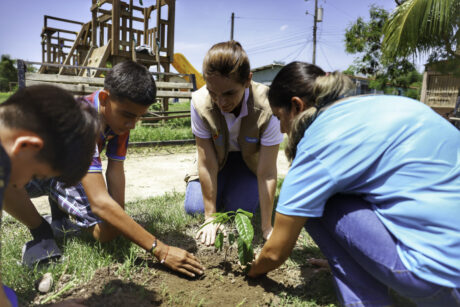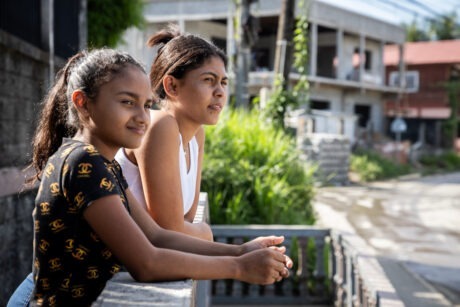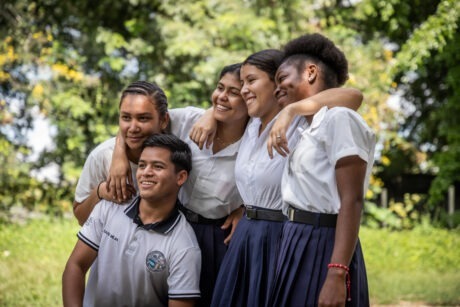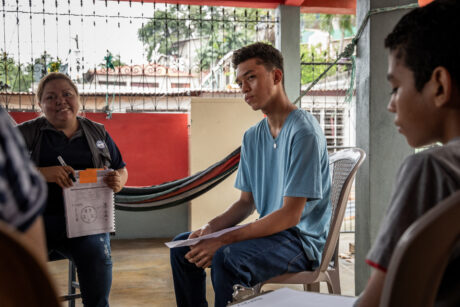De nouvelles personnes, HondurasRickis Mabel Gálvez Zamora lui en a dit six- Et des enfants de sept ans qu'ils étaient sur le point de partir dans «une aventure».
Les jeunes enfants ignoraient que «l'aventure» de la famille serait un multi-pays, odyssée de migration irrégulière de cette communauté rurale du Honduras vers les États-Unis, Un voyage que Gálvez Zamora avait prévu pendant deux ans.
«C'était quelque chose de très planifié. J'ai décidé quelles choses nous devions prendre depuis que j'allais avec deux petits enfants. Ce n'était pas une décision facile,"Galvez Zamora dit.
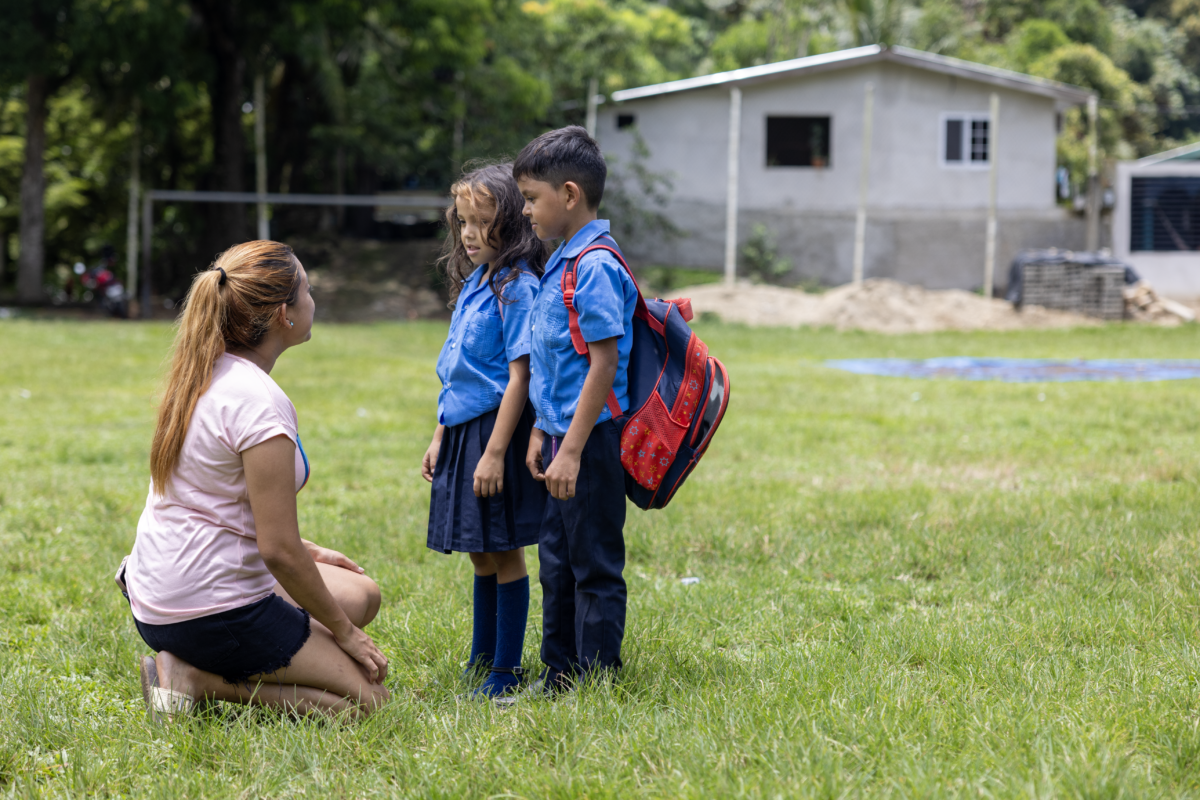
Situé sur 30 À quelques minutes de Puerto Cortés, Pueblo Nuevo fait partie d'une chaîne de communautés rurales situées sur des collines pittoresques avec des pâturages, fermes de petites intrigues et végétation luxuriante. La plupart des gens ont du mal à se débrouiller car les opportunités économiques ne semblent jamais atteindre la zone rurale, elle dit. Pour certains résidents, Le vide économique est rempli de crime, violence et consommation de drogue. Dans le cas de Gálvez Zamora, Sa sombre situation économique a été aggravée par la violence à la maison.
Leur jour de départ est arrivé début août 2023. Au cours des trois prochaines semaines, Gálvez Zamora et ses deux jeunes enfants ont voyagé en bus, camionnette et voiture. Arriver aux États-Unis. frontière, Gálvez Zamora s'est immédiatement signalée et ses enfants aux États-Unis. Les autorités dans l'espoir d'obtenir une résidence temporaire.
La patrouille frontalière «nous a enfermés et a demandé nos informations, Mais ils ne nous ont rien dit," dit-elle. «Nous avons attendu et attendu, Et après quatre jours, Ils nous ont juste dit d'emballer nos affaires. Ils ne nous ont pas dit si nous allions chez nos proches [aux États-Unis] ou retourner dans notre pays.
La mère célibataire de 28 ans a eu la réponse lorsque la patrouille frontalière les a mis sur un vol de retour au Honduras. Quand le vol a touché à San Pedro Sula, Le gouvernement hondurien a traité la famille et lui a permis d'appeler son père. Un mois après se diriger vers le nord, La famille était de retour où ils ont commencé à Pueblo Nuevo.
«Vous souffrez beaucoup dans le voyage, Il y a des choses qui vous laissent une marque en cours de route," dit-elle. «Beaucoup de gens sont morts en cours de route. Nous nous sentions très tristes, nostalgique et en même temps très heureux parce que nous revenons en toute sécurité. Certaines personnes pleuraient parce qu'elles avaient perdu leur conjoint ou leurs enfants. Je venais avec mes deux enfants, Alors j'étais heureux. En même temps triste parce que mon rêve a été brisé.
Endetté pour payer le passage infructueux, Traumatisé par le long voyage et la perte de son rêve américain, Gálvez Zamora est devenue déprimée et s'est fermée dans une chambre.
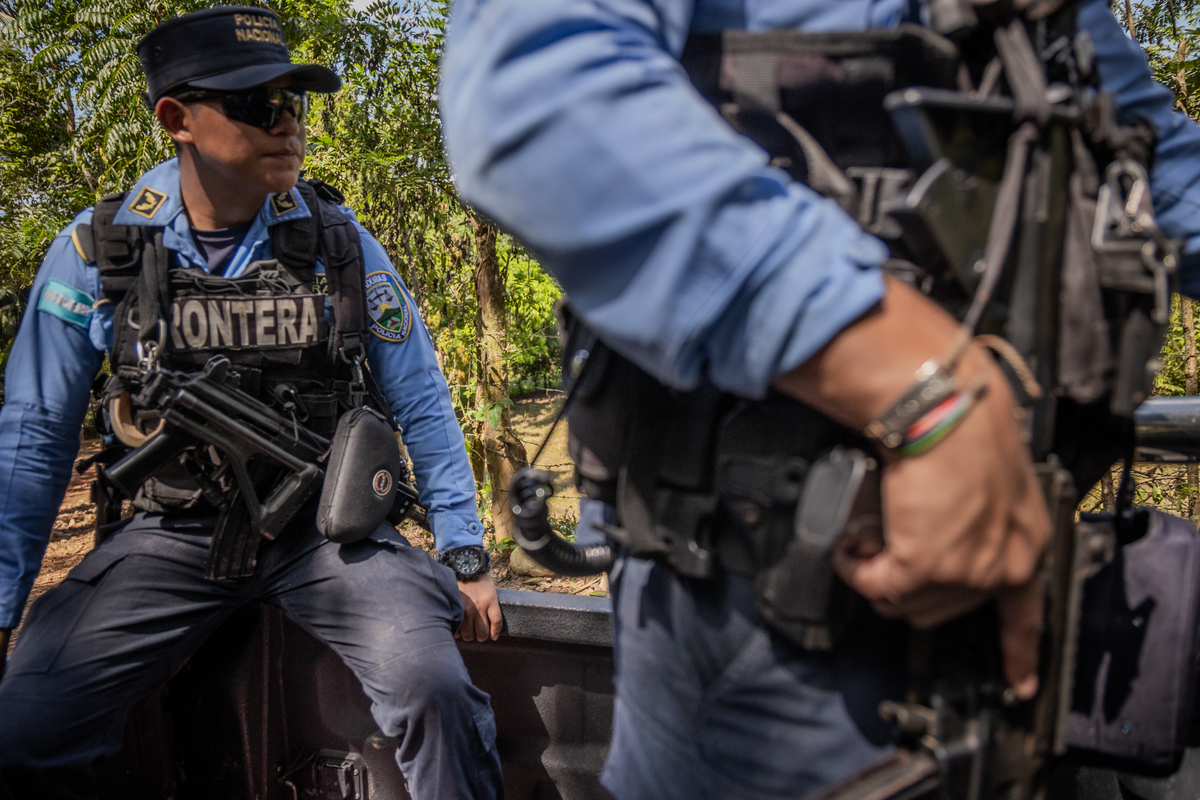
Réduire la migration irrégulière et soutenir les rapatriés
L'histoire de Gálvez Zamora est tragique mais commune parmi les milliers de migrants irréguliers qui sont retournés chaque année au Honduras, dit Robyn Braverman, le chef du parti de Esperanza de l'USAID activité.
UN Étude majeure publiée Ce printemps par Sembrando Esperanza de l'USAID a identifié les mères célibataires comme un risque élevé de violence, crime et migration irrégulière. Comme Gálvez Zamora, Près d'un quart des migrants retournés sont des âges 25 à 29, et certains 33 pour cent sont des femmes, selon les données du gouvernement hondurien 2022.
Marcelo Villalvir, Le conseiller principal de Sembrando Esperanza dans la migration et la jeunesse, dit que le gouvernement hondurien fournit des services de base aux migrants retournés, bien qu'il soit loin d'être suffisant pour répondre aux conséquences émotionnelles ou aux besoins financiers pour se rétablir.
Dans le cadre des efforts de l'USAID pour endiguer la migration irrégulière du Honduras et ailleurs en Amérique centrale, Semer Esperanza et l'aide à but non lucratif en action se sont associés pour développer un programme pilote pour s'adresser, bien-être émotionnel et droits d'une population négligée et mal desservies dans l'écosystème de migration irrégulière. Un autre objectif de l'effort était de réduire la probabilité que les rapatriés tentent un autre trek dangereux et coûteux.
«Sembrando Esperanza se concentre sur la génération de preuves et la démonstration que les modèles mis en œuvre peuvent créer des changements dans la vie des gens,"Dit Villalvir.
Vladimir Larios, Aide chez Action's Director à San Pedro Sula, a souligné que le modèle qu'ils développaient devait servir un large éventail de rapatriés.
«L'objectif de ce pilote était de tester un modèle qui pourrait aider à améliorer la réintégration inclusive et durable des populations de migrants retournés,», A déclaré Larios lors d'une présentation en août 2024. "Initialement, Nous nous sommes concentrés sur la recherche et la conception pour identifier les meilleures pratiques des organisations locales et internationales travaillant avec des migrants retournés, S'attaquer à l'écart significatif de l'attention à cette population. »
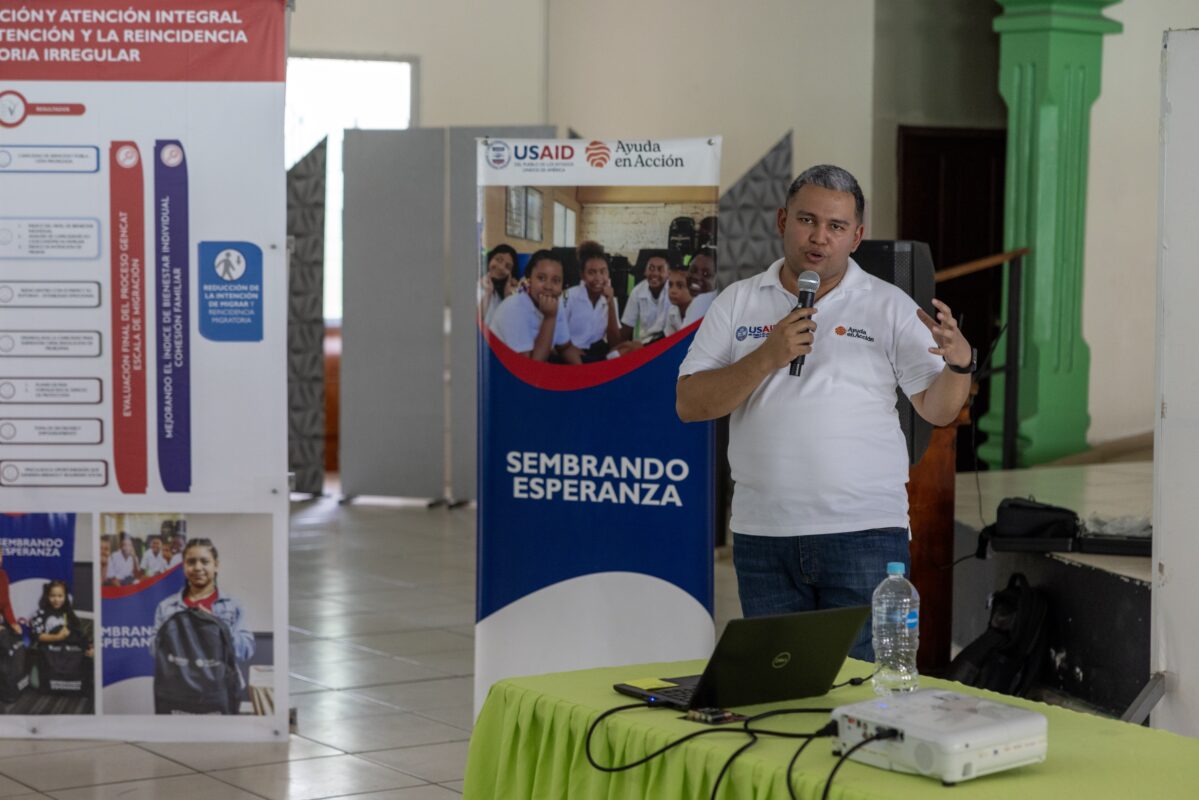
L'Esperanza et Aide en action de l'USAID ont collaboré avec les autorités fédérales et locales, les organisations communautaires et les groupes internationaux pour construire un protocole pour soutenir le social, besoins émotionnels et financiers des rapatriés. Bien que les organisations locales et internationales aient eu les meilleures intentions, Il y avait peu de coordination entre les groupes.
«Pendant la phase de conception, De nombreuses organisations nous rencontreraient, Et nous avons eu de vastes conversations, discussions très larges,"Larios a dit. «Mais quand il s'agissait de fournir des outils, apprentissages, systématisation ou leçons apprises, [les organisations locales] avait peu à offrir.
Construire un modèle de soutien basé sur les données
Semer Esperanza et Help in Action's Model a tiré parti de l'échelle Gencat, qui a été développé par l'Institut catalan d'assistance et de services sociaux en Espagne pour évaluer le bien-être psychologique des gens en fournissant une évaluation complète à travers de multiples dimensions de la qualité de vie. En évaluant ces dimensions, Un «indice de qualité de vie» basé sur Gencat a été développé pour que le pilote identifie des domaines spécifiques où un individu peut avoir besoin d'un soutien ou d'une intervention, comme la santé émotionnelle, relations sociales ou conditions matérielles.
Lors de la modélisation et de la mise en œuvre du pilote, Les organisations se sont appuyées sur des experts comme Help in Action Psychologist Ana Gabriela Medina, qui a une formation à soutenir les personnes qui avaient vécu des événements traumatisants.
«Nous avons également effectué des consultations avec des experts et des ateliers avec des populations vulnérables, Valider nos résultats avec des migrants retournés de la communauté LGTBQI +, les personnes handicapées et la violence contre les femmes et les filles survivantes,»Dit Medina, Un psychologue avec une action aide, Pendant une présentation. «Cela a conduit au développement d'un protocole local d'assistance et de réintégration, Se concentrer sur la planification, Interventions sociales et psychosociales et cartographie des services. »
Utilisation d'outils comme l'indice de qualité de vie, Semer Esperanza et aider en action des interventions personnalisées pour répondre aux besoins spécifiques des individus. Le pilote - qui a fourni un soutien pendant six mois - a été mis en œuvre à Choloma, Porto Cortés et Tegucigalpa, les zones avec le plus grand nombre de migrants retournés, avec 105 rapatriés.
Medina a déclaré que les interventions psychologiques comprenaient des groupes d'auto-assistance avec cinq séances allant de la reconnaissance de leur expérience migratoire individuelle à la réintégration et aux thérapies psychosociales qui comprenaient la stabilisation et le renforcement de la confiance.
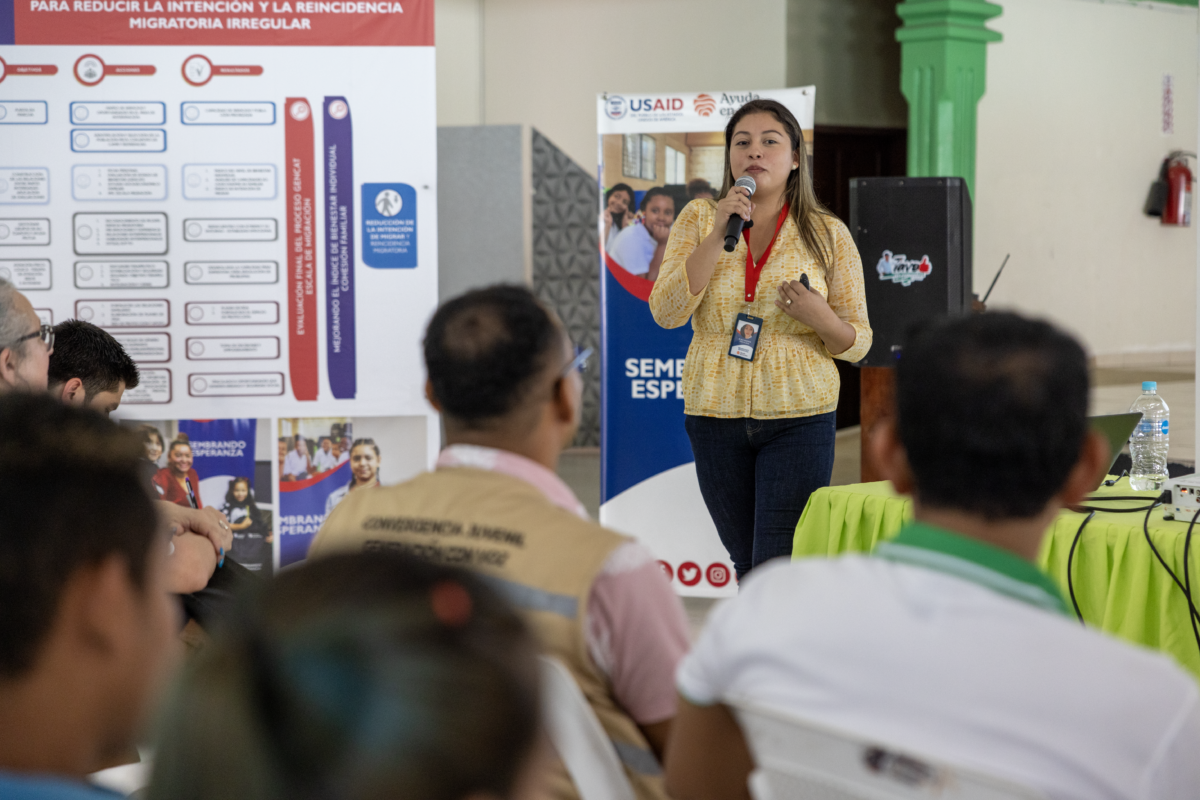
En outre, Le pilote a développé des interventions sociales qui comprenaient le renforcement des espaces sûrs, Créer des plans de vie et développer des compétences de vie à travers des ateliers sur les droits de migration, rôles de genre, santé et nutrition, Soutenu par diverses organisations.
Bien qu'un pilote comme celui-ci soit nécessaire pour aider les retoursetés à s'intégrer dans leurs communautés, Le chef du parti du parti de Sembrando Esperanza dit qu'ils ont fait face à des obstacles à atteindre et à convaincre les migrants de participer.
«Le défi n'était pas de créer le pilote. Le défi a été de trouver des rapatriés une fois qu'ils sont retournés à leur lieu d'origine. Cela a pris beaucoup plus de temps que prévu,"Braverman dit, notant que les bases de données gouvernementales étaient parfois incomplètes ou que de nombreux rapatriés sont restés dans l'ombre. «Mais une fois que les familles ont commencé le pilote, Ils ont été engagés et engagés. »
Gálvez Zamora tourne un coin émotionnel
Déprimé, confus et sans chemin vers l'avant, Gálvez Zamora était sur. Heureusement, Une organisation locale l'a recommandée comme l'une des 30 Participants pilotes de la région de Porto Cortes. Elle a été évaluée sur l'échelle Gencat et a reçu des séances de thérapie individuelle et de groupe.
«J'ai décidé de m'ouvrir un peu lors de la première session,»Gálvez Zamora se souvient. «J'ai exprimé que je ne pouvais pas dormir, Je ne mangeais pas bien, Parfois, je ne mangeais qu'une fois par jour parce que je ne me sentais pas bien émotionnellement. "
La psychologue Regina Ramos de Aye une aide à Puerto Cortls se souvient de l'état d'esprit critique de Gálvez Zamora.
«Il y a un an, Elle était à un faible niveau émotionnel »basé sur l'échelle Gencat, Ramos se souvient. «La seule chose qui l'a vraiment gardée motivée était ses deux enfants. Et quand nous avons commencé les sessions, Je me souviens qu'elle avait absorbé tant d'émotions et les avait réprimées sans parler à personne. Elle a commencé à pleurer lors de la première session. »
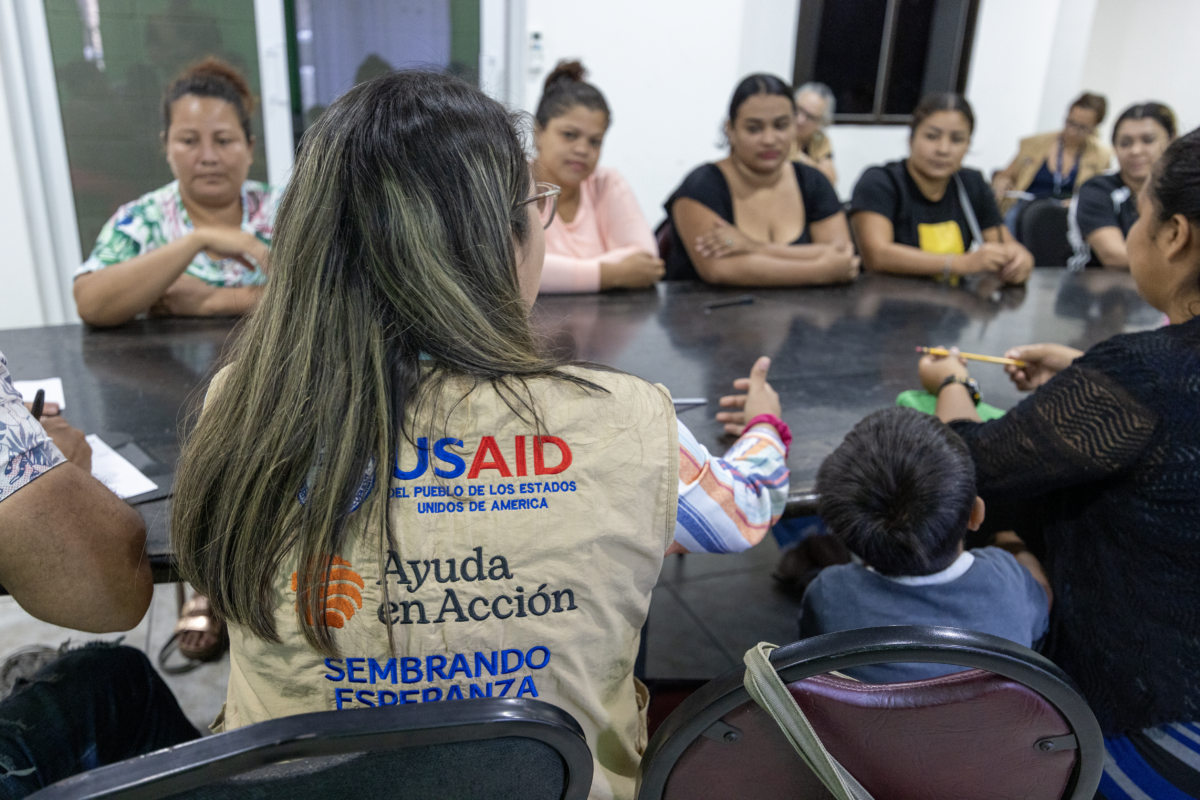
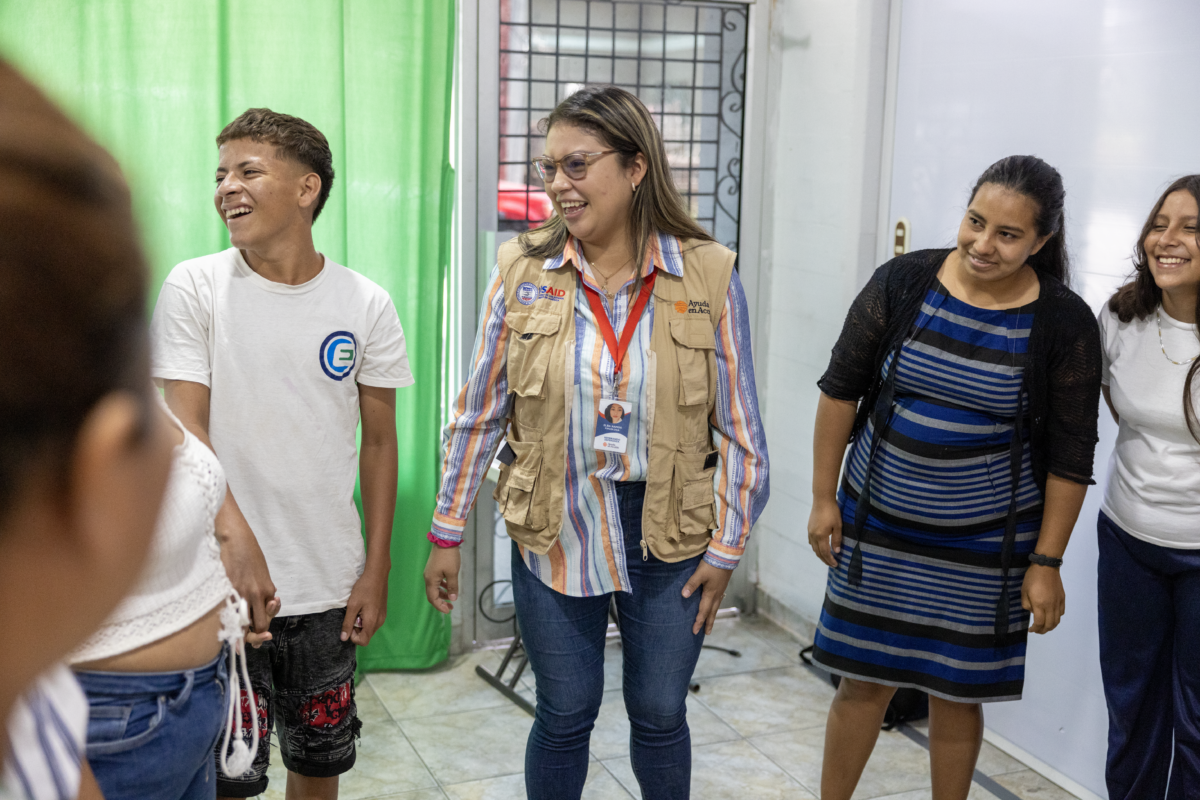
Après chaque session, Gálvez Zamora s'est senti un peu mieux et est devenue lentement optimiste que sa situation s'améliorerait, un trait qui a déteint les autres participants.
Aujourd'hui, Gálvez Zamora poursuit sa thérapie et étudie comme mécanicien, Une profession souvent limitée aux hommes. Elle excelle dans son travail. Ses deux enfants ont reçu des kits d'école donnés par le secteur privé, retournés dans leurs salles de classe et obtiennent de bonnes notes.
Le psychologue Ramos considère Gálvez Zamora comme une réussite.
"C'est beau de voir les progrès d'une mère célibataire,"Ramos dit. «C'est motivant à voir une femme aller de l'avant avec ses deux enfants, Une jeune femme qui lui donne le meilleur dans la vie et décide d'elle-même pour apprendre à être en mesure de prospérer et de démarrer une entreprise dans ce pays après le parcours de migration. Nous avons fait du bon travail, pas seulement une personne mais nous tous ensemble, y compris elle et le groupe.
Comme l'histoire de Gálvez Zamora, un juin 2024 L'analyse interne du pilote a révélé qu'elle fournissait une émotion essentielle et nécessaire, soutien social et financier aux rapatriés. Villalvir dit 95 de la 105 Les participants avaient augmenté leurs scores dans l'indice de la qualité de vie, avec l'autre 10 abandonner pour poursuivre des travaux ailleurs au Honduras et n'a pas pu continuer à traiter.
Avec le succès du pilote, Braverman a déclaré les centres de réception municipaux et.
«Nous avons pu mesurer leur bien-être et leur qualité de vie en fonction de huit dimensions avant et après et avons pu documenter un changement positif à travers les huit dimensions après l'intervention. Répondre au bien-être et à la qualité de vie diminue certainement l'envie ou le besoin de migrer," dit-elle.
Avec reportage par Luis Villatoro.
